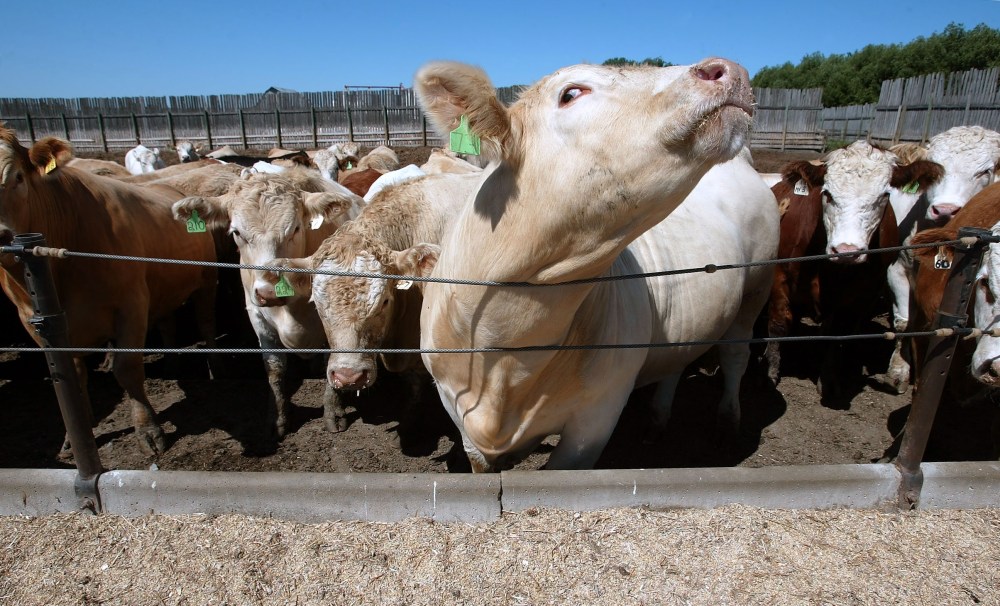Funding for large-animal vet equipment
Advertisement
Read this article for free:
or
Already have an account? Log in here »
We need your support!
Local journalism needs your support!
As we navigate through unprecedented times, our journalists are working harder than ever to bring you the latest local updates to keep you safe and informed.
Now, more than ever, we need your support.
Starting at $15.99 plus taxes every four weeks you can access your Brandon Sun online and full access to all content as it appears on our website.
Subscribe Nowor call circulation directly at (204) 727-0527.
Your pledge helps to ensure we provide the news that matters most to your community!
To continue reading, please subscribe:
Add Brandon Sun access to your Winnipeg Free Press subscription for only
$1 for the first 4 weeks*
*$1 will be added to your next bill. After your 4 weeks access is complete your rate will increase by $4.99 a X percent off the regular rate.
Read unlimited articles for free today:
or
Already have an account? Log in here »
Hey there, time traveller!
This article was published 23/06/2023 (832 days ago), so information in it may no longer be current.
Ensuring all veterinary clinics have up-to-date equipment could attract more professionals to stay in rural Manitoba, one technician at the Killarney Vet Clinic says.
Kaylee Hill, who works at the clinic in Killarney, located 99 kilometres southeast of Brandon, believes newly announced funding from the provincial and federal governments to enhance the capacity of rural veterinary service districts throughout the province will help vet clinics upgrade their equipment and attract and retrain more veterinarians.
“The better equipment you have, the safer you feel, and also, you can do your job better,” Hill told the Sun.

Under the provincial and federal Sustainable Canadian Agriculture Partnership (SCAP), the province and the federal government announced $2 million to enhance the capacity of rural veterinary services districts throughout Manitoba yesterday. Each district will be eligible to receive up to $75,000 toward the purchase of large-animal veterinary equipment.
Depending on the time of the year, up to 75 per cent of animals that rural veterinary practices treat are large stock animals like bulls, cows and calves, Hill said.
“And then in the fall, when we start to do pregnancy checks, we’re doing herds of 50 to up to 300, 400 animals,” she said. “We get quite busy with large animals at that time.”
In the spring, before bulls go to pasture, many beef producers use veterinary services to test the animals’ semen, so that time of year is also very busy for veterinary clinics that service large animals, Hill said.
A press release sent out by the province and Canada on Thursday said that with updated equipment, veterinary clinics be able to better support the recruitment and retention of veterinarians in rural areas.
In Manitoba and across Canada, veterinary professionals, including veterinarians and veterinary technologists and technicians, are increasingly concerned with the current state of the veterinary profession and its future, the Canadian Veterinarian Medical Association’s website says. A severe shortage of veterinary professionals is negatively impacting the health and well-being of the veterinary workforce and places additional pressures on the level of quality of care they can provide for their clients, the organization says.
In 2022, the Manitoba government expanded its training agreement with the Western College of Veterinary Medicine in Saskatoon to address the critical need for veterinarians and invested in a modernized animal health laboratory information management system to strengthen the provincial animal disease surveillance program.
The SCAP investment promotes overall animal health and welfare, supports a resilient food chain, and helps ensure Manitoba is well-prepared for animal disease emergencies in 26 rural locations, which account for more than 80 per cent of the Manitoba clinics providing large-animal hospital services, Manitoba Agriculture Minister Derek Johnson said.
“Investing in large-animal veterinary services is vital to the continued resiliency and sustainability of Manitoba’s livestock sector,” Johnson stated in the press release.
Essential services that veterinary professionals provide to Manitoba’s beef producers are invaluable, Manitoba Beef Producers president Matthew Atkinson said.
“Government investments in large-animal veterinary equipment are key components in supporting veterinary staff as they provide quality care for beef cattle.”
» mleybourne@brandonsun.com
» Twitter: @miraleybourne
